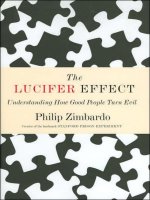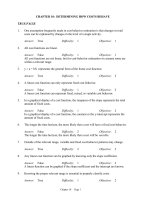Understanding business 10th chapter 2b understanding how economics affects business
Bạn đang xem bản rút gọn của tài liệu. Xem và tải ngay bản đầy đủ của tài liệu tại đây (3.13 MB, 77 trang )
Chapter 02
Understanding
Economics and
How It Affects Business
McGraw-Hill/Irwin
Copyright © 2013 by The McGraw-Hill Companies, Inc. All rights reserved.
What Is
Economics?
ECONOMICS: WHAT IS IT?
2-5
•
Economics -- The study of how society employs resources to produce goods and
services for distribution among various groups and individuals.
2-6
The MAJOR BRANCHES of
ECONOMICS
•
Macroeconomics -- Concentrates on the operation of a nation’s economy as a whole.
•
Microeconomics -- Concentrates on the behavior of people and organizations in
markets for particular products or services.
2-7
What Is
Economics?
RESOURCE DEVELOPMENT
LG1
•
Resource Development -- The
study of how to increase resources
and create conditions that will make
better use of them.
2-8
Economic Theories
2-11
Economic Theories
Thomas Malthus
•
•
2-12
“Dismal Science”
Too many people
THOMAS MALTHUS and
the DISMAL SCIENCE
•
Malthus believed that if the rich had most of the wealth and the poor had most of the
population, resources would run out.
•
This belief led the writer Thomas Carlyle to call economics “The Dismal Science.”
•
Neo-Malthusians believe there are too many people in the world and believe the
answer is radical birth control.
2-13
Economic Theories
Adam Smith (1776)
•
•
•
•
•
2-15
Advocated creating
wealth through
entrepreneurship
Freedom is vital
“Invisible Hand”
Adam Smith & the Creation of
Wealth
ADAM SMITH the
FATHER of ECONOMICS
LG1
Smith believed that:
•
Freedom was vital to any economy’s survival.
•
Freedom to own land or property
and the right to keep the profits of a
business is essential.
•
People will work hard if they believe
they will be rewarded.
2-16
The INVISIBLE HAND THEORY
•
Invisible Hand -- When self-directed gain leads to social and economic benefits for the
whole community.
•
As people improve their own situation in life, they help the economy prosper through
the production of goods, services and ideas.
2-17
Example of
INVISIBLE HAND THEORY
•
•
A farmer earns money by selling his crops.
To earn more, the farmer hires farmhands to
produce more crops.
•
When the farmer produces more, there is plenty of
food for the community.
•
The farmer helped his employees and his community
while helping himself.
2-18
Three Economic Systems
2-20
Three Economic Systems
Socialism
(Highly Controlled)
Communism
2-21
(Little Control)
Capitalism
Capitalism
2-22
CAPITALISM
•
*
Capitalism -- All or most of the land, factories and stores are owned by individuals, not
the government, and operated for profit.
•
Countries with capitalist foundations:
-
United States
England
Australia
Canada
2-23
The Foundations of Capitalism
CAPITALISM’S
FOUR BASIC RIGHTS
LG2
1.
The right to own private property.
2.
The right to own a business and keep all that
business’s profits.
3.
The right to freedom of competition.
4.
The right to freedom of choice.
2-24
FREE MARKETS
•
Free Market -- Decisions about what and how much to produce are made by the market.
•
Consumers send signals about what they like and how they like it.
•
Price tells companies how much of a product they should produce. If something is
wanted but hard to get, the price will rise until more products are available.
2-27
Supply and Demand
2-28
Supply Curve
Supply -- The quantities of products businesses are willing to sell at different prices.
High
Price(P)
S
Low
2-29
Quantity(S)
High
Demand Curve
•
Demand -- The quantities of products consumers are willing to buy at different prices.
High
Price(P)
D
Low
2-30
Quantity(D)
High
Equilibrium Point
•
Market Price (Equilibrium Point) -- Determined by supply and demand, this is the
negotiated price.
Surplus
High
Market Equilibrium
Price
S
Low
2-31
Shortage
Quantity
D
High









